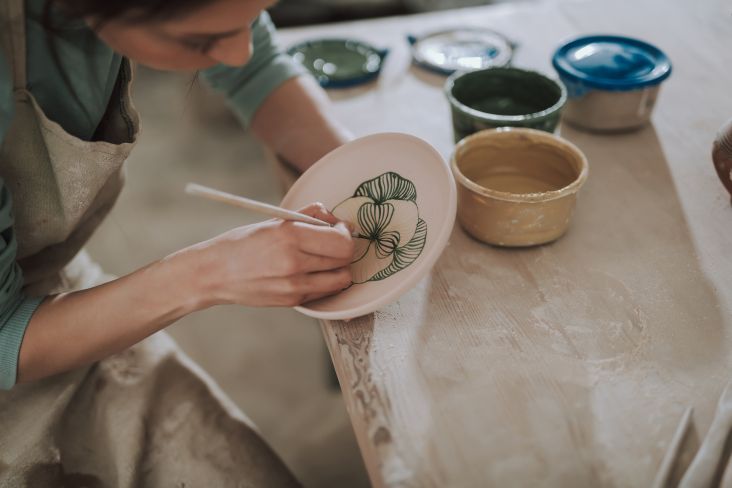Cherish to flourish: how to build a lasting relationship with your clients
We celebrate International Client Day by sharing some tried-and-tested tips for growing and nurturing your relationships with clients.

Image licensed via Adobe Stock
Happy International Client Day! Didn't know that was a thing? You're not alone. This unofficial holiday is celebrated on 19 March every year, and it's a day for freelancers, entrepreneurs, and businesses to show appreciation to their clients. There's even a song!
International Client Day was started in 2010 by Russian and Lithuanian businesspeople and has since spread around the world. One thing it offers is an easy opportunity for self-promotion. For instance, clients sometimes get tired of the same begging email saying, "Got any work?" But on International Client Day, you could reframe this as a special discount day or even send them a bespoke gift.
Even if you've got enough work to get on with, though, International Client Day serves as a poignant reminder of the pivotal role that clients play in freelancers' lives. It seems obvious to point this out, but we often forget that these are the people who pay our wages. And so it's easy to overlook the significance of keeping them happy.
Yes, it's fun and potentially rewarding to hunt for new clients. However, retaining existing ones is much more important if you're to make your freelance career successful. Loyal clients not only provide a steady stream of revenue, but they also become your advocates, singing your praises to their networks.
So read on, as we share the most important things you need to do, to nurture these relationships and turn one-off clients into long-term partners.
1. Deliver on your promises
Fundamentally, turning a short-term client into a long-term client is not rocket science. If you deliver what's been agreed upon and to the timetable you've promised, then they're highly likely to use you again. Think about it: why take a risk with someone else who's untested when they know you're reliable? It's a no-brainer.
Sometimes, however, creatives can't see the wood for the trees. An example might be an illustrator who's been commissioned by a magazine for the first time to create editorial artwork. At the 11th hour, they've drawn something, but they're not happy with it, and they ask for a deadline extension so they can have another go.
The magazine editor doesn't really have much choice: They have to change their publishing schedule to accommodate the request. It's frustrating, though, and not a great start to their relationship.
The artwork is eventually delivered and is much more to the illustrator's liking… but the editor probably would have been happy with the first attempt. So the illustrator may now have a nicer piece of work to put in their portfolio, but they've shot themselves in the foot, as the editor probably won't use them again or recommend them to others.
Takeaway
Be honest and realistic about what you can achieve. Once you set expectations, consistently deliver high-quality work and meet the agreed-upon deadlines. This shows clients you value their time and business.
2. Listening is key
'Deliver on your promises' might sound straightforward. But you also need to look at what you've promised, and whether it's what the client is actually seeking. The danger is that you end up talking the client into commissioning the kind of work you like doing, rather than what the client actually wants.
This is particularly common with more technical work, such as motion graphics or web design. So, just like in your personal relationships, the key is listening and respecting what the other person has to say.
No one likes making a pitch and then hearing the client pull apart your ideas. And the natural human response is to see red, and start getting defensive. But it's better to instead take a deep breath, and think deeply about why the client doesn't like your suggestions. Is it that you haven't explained them properly? Or maybe there's something about the needs of the business that you haven't quite got your head around.
Either way, don't see a clash of ideas as a problem; see it as an opportunity to understand each other better. Something that can only help your relationship grow deeper over time. For more on this, read 5 ways to deal with client rejection.
Takeaway
Don't just hear your clients; actively listen. Pay close attention to their needs, goals, and any unspoken concerns. Ask clarifying questions and demonstrate a genuine desire to understand them.
3. Keep communicating
Once you start getting regular work from a client, it's natural that you'll spend less time chatting with each other. After all, one of the perks of working with a known quantity (on both sides of the relationship) is that you can just get on with things with the minimum of fuss. And we are all busy people.
But take care not to let things go too far down this path. Maintaining open communication with your clients, to some degree, is still crucial.
After all, projects rarely unfold exactly as either of you planned, and new requirements or challenges often arise unexpectedly. Staying in touch and checking in on a regular basis makes it easy to identify potential issues early on, adjust the project scope if necessary, and keep your client informed. This proactive approach builds trust and prevents misunderstandings that could derail the project later.
Regular communication also opens a dialogue that allows for collaboration and innovation. Your client might have valuable insights or suggestions that could improve the final work. Or you might uncover new opportunities to add value that weren't initially discussed.
Thirdly, regular communication gives the client a sense of how your work for them is progressing. That saves them from worrying that you haven't done anything at all and having to chase you up, which is all the extra stress they can do without.
Finally, and most fundamentally, communication makes clients feel valued. Yes, they may occasionally get snippy if they're too pressured with other things to respond to your email or request a Zoom meeting. But deep down, they'll prefer that kind of pressure to feeling ignored. And clients who feel valued and informed are more likely to become repeat customers and advocates.
Takeaway
Regular check-ins and updates, even when you're not actively working on a project, go a long way in fostering transparency and trust. Don't go overboard, but use empathy and think about how often you'd want an update or a check-in if the roles were reversed.
4. Exceed expectations
So far, we've covered the basic requirements of keeping clients happy. But of course, other freelancers will doubtless be doing the same things. So, if you're in a competitive market, it's worth thinking about how to raise your freelance practice above the norm and make it the one everyone wants to keep coming back to.
How to exceed expectations will vary from client to client, but ultimately, it means anticipating their needs rather than being told them directly. This means thinking ahead and anticipating potential roadblocks or challenges your clients might face. If you can do this, you'll soon find ways to offer clients added value. In other words, offering additional services, resources or advice beyond what they've commissioned you for.
This might be extra work that you can charge for, or it might take you little to no time at all. A simple example might be an illustrator noticing that their client's website needs updating and recommending a web designer they can personally vouch for. That's quick and easy to do, but the client may find it absolutely invaluable.
Takeaway
To truly cement your position as an indispensable partner, strive to consistently exceed your clients' expectations. This may mean adding extra flourishes that enhance the overall impact of a project or providing expert insights that contribute to their broader business goals. By going above and beyond, you'll not only delight your clients but also differentiate yourself from competitors.
5. Make it personal
One thing that freelancers often forget, especially in the corporate world, is that clients are humans, too. So, if you're able to connect on a personal level, this can ultimately mean more to the client than the cost of your services or the quality of your work.
That doesn't mean diving in and trying to be their best friend; that would be inappropriate and potentially creepy. But it can mean doing small but significant things like celebrating your client's milestones (such as the anniversary of their launch) and client wins (big or small). A quick email acknowledging a successful product launch or a personalised note congratulating them on reaching a goal shows you care about their achievements and don't just see them as a cash machine.
Over time, you might want to extend this approach, getting to know their birthdays, preferences, or favourite sports teams. Again, you'll have to use your judgment and keep things appropriate and business-like. But these seemingly small gestures build rapport and create a more human connection that can be a huge help in building and growing your client relationships.
Takeaway
Every client is unique, with distinct needs, preferences and goals, so tailoring your approach to each individual client is crucial. Personal touches, such as sending handwritten thank-you notes or personalised emails on special occasions, can further strengthen these bonds and leave a lasting impression.









](https://www.creativeboom.com/upload/articles/86/862919952c0ad18439004228895a431dc6e45ffc_732.jpg)












